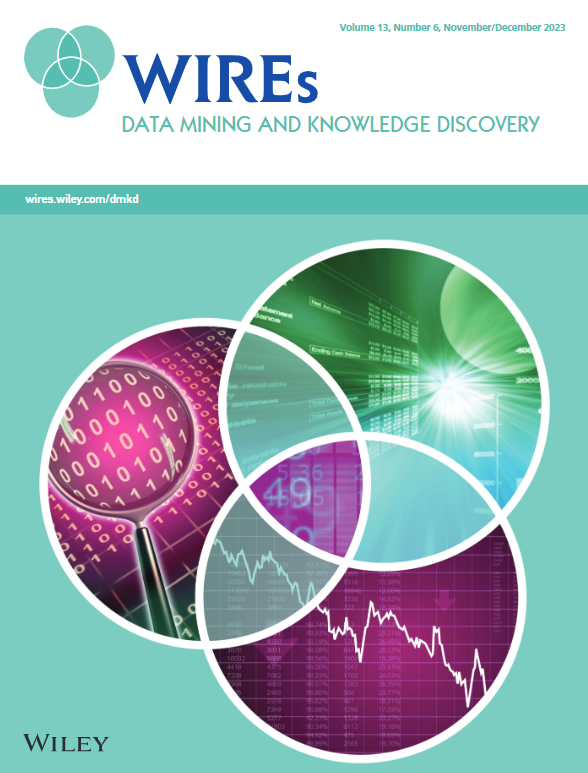在线学习环境中使用社会网络分析检测社区:系统文献综述
IF 6.4
2区 计算机科学
Q1 COMPUTER SCIENCE, ARTIFICIAL INTELLIGENCE
Wiley Interdisciplinary Reviews-Data Mining and Knowledge Discovery
Pub Date : 2021-09-25
DOI:10.1002/widm.1431
引用次数: 11
摘要
揭示社区结构在解释、分析和预测与社会学、犯罪学、生物学、医学、传播学、经济学和学术界等不同领域相关的网络行为和动态方面取得了重大进展。检测和聚类社区是识别社会网络结构属性和行为模式的有力一步。最近,在线学习已经逐渐被许多教育实践所采用,这就提出了许多关于评估新兴学习社区中学习者的参与、协作和行为的问题。这篇系统的文献综述旨在评估社区检测技术在分析在线学习环境中网络结构中的应用。它全面概述了采用这些技术的现有研究,并确定了其应用背后的教育目标,并提出了可能的未来研究方向。我们的分析涵盖了在文献中发现的65项研究,并在各种类型的在线学习环境中应用了不同的社区发现技术,以分析其用户的交互模式。我们的回顾揭示了该领域在改善教育实践和决策以及利用与这些环境交互产生的大量数据方面的潜力。最后,我们强调了在在线学习环境中加入自动社区发现技术的必要性,以促进和加强它们的使用,我们还强调了进一步推进研究以发现大量隐藏机会的迫切需要。本文章由计算机程序翻译,如有差异,请以英文原文为准。
Detecting communities using social network analysis in online learning environments: Systematic literature review
Uncovering community structure has made a significant advancement in explaining, analyzing, and forecasting behaviors and dynamics of networks related to different fields in sociology, criminology, biology, medicine, communication, economics, and academia. Detecting and clustering communities is a powerful step toward identifying the structural properties and the behavioral patterns in social networks. Recently, online learning has been progressively adopted by a lot of educational practices which raise many questions about assessing the learners' engagement, collaboration, and behaviors in the new emerging learning communities. This systematic literature review aims to assess the use of community detection techniques in analyzing the network's structure in online learning environments. It provides a comprehensive overview of the existing research that adopted those techniques with identifying the educational objectives behind their application as well as suggesting possible future research directions. Our analysis covered 65 studies that found in the literature and applied different community discovery techniques on various types of online learning environments to analyze their users' interactions patterns. Our review revealed the potential of this field in improving educational practices and decisions and in utilizing the massive amount of data generated from interacting with those environments. Finally, we highlighted the need to include automated community discovery techniques in online learning environments to facilitate and enhance their use as well as we stressed on the urge for further advance research to uncover a lot of hidden opportunities.
求助全文
通过发布文献求助,成功后即可免费获取论文全文。
去求助
来源期刊

Wiley Interdisciplinary Reviews-Data Mining and Knowledge Discovery
COMPUTER SCIENCE, ARTIFICIAL INTELLIGENCE-COMPUTER SCIENCE, THEORY & METHODS
CiteScore
22.70
自引率
2.60%
发文量
39
审稿时长
>12 weeks
期刊介绍:
The goals of Wiley Interdisciplinary Reviews-Data Mining and Knowledge Discovery (WIREs DMKD) are multifaceted. Firstly, the journal aims to provide a comprehensive overview of the current state of data mining and knowledge discovery by featuring ongoing reviews authored by leading researchers. Secondly, it seeks to highlight the interdisciplinary nature of the field by presenting articles from diverse perspectives, covering various application areas such as technology, business, healthcare, education, government, society, and culture. Thirdly, WIREs DMKD endeavors to keep pace with the rapid advancements in data mining and knowledge discovery through regular content updates. Lastly, the journal strives to promote active engagement in the field by presenting its accomplishments and challenges in an accessible manner to a broad audience. The content of WIREs DMKD is intended to benefit upper-level undergraduate and postgraduate students, teaching and research professors in academic programs, as well as scientists and research managers in industry.
 求助内容:
求助内容: 应助结果提醒方式:
应助结果提醒方式:


